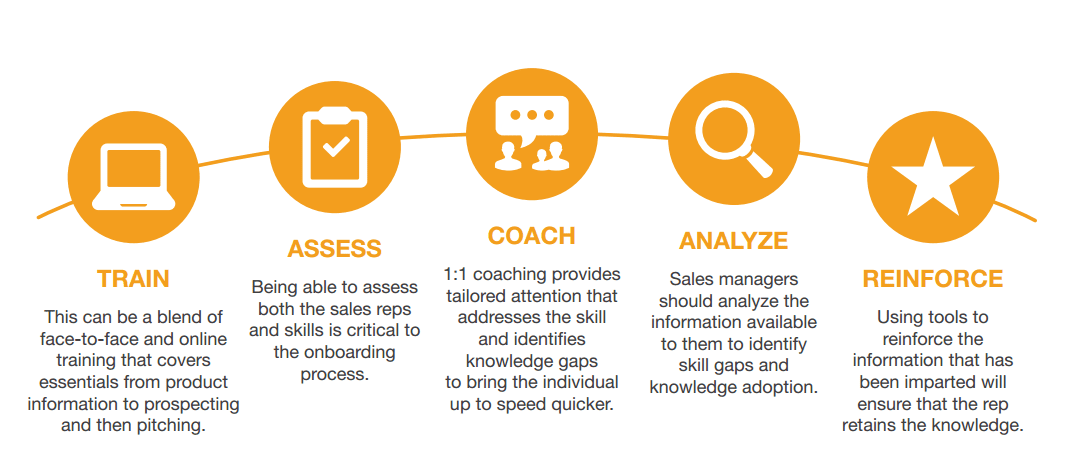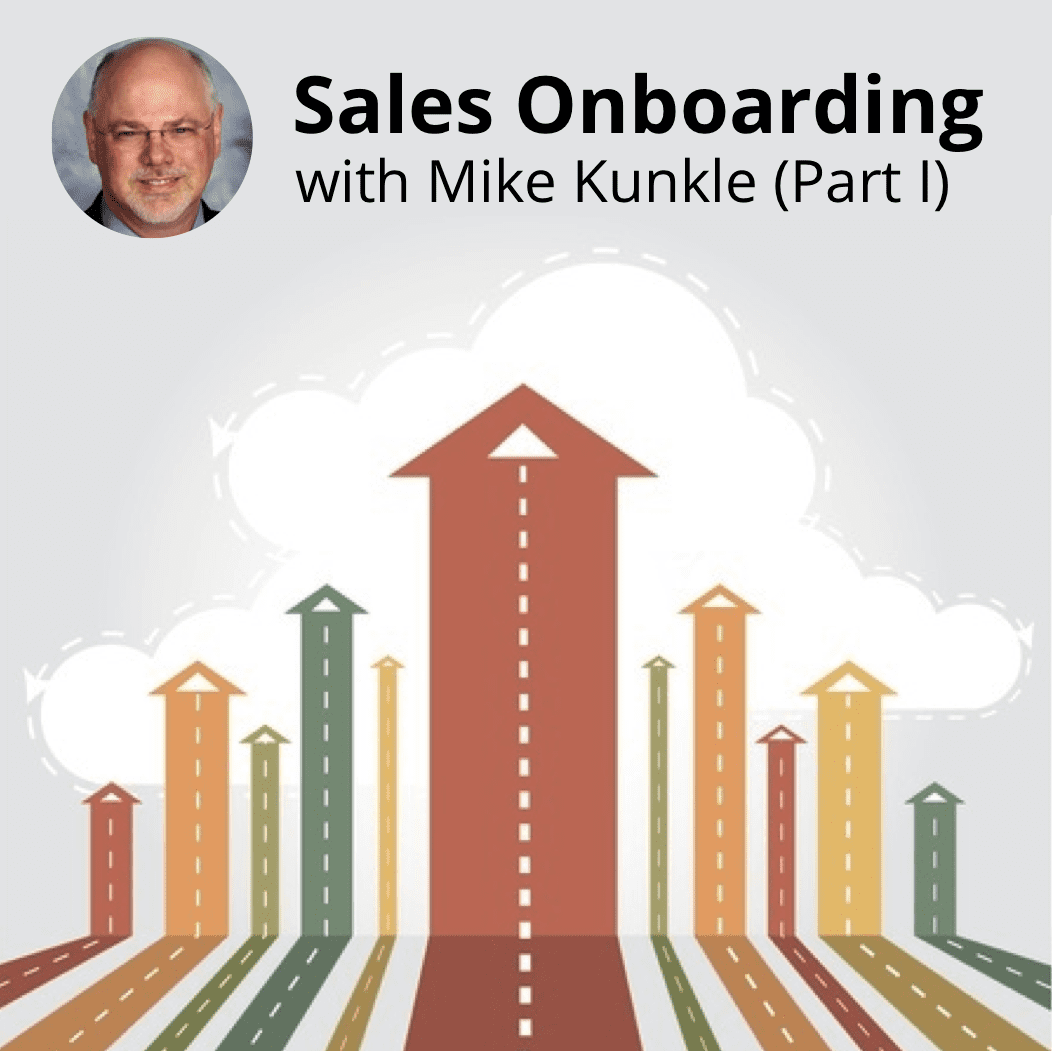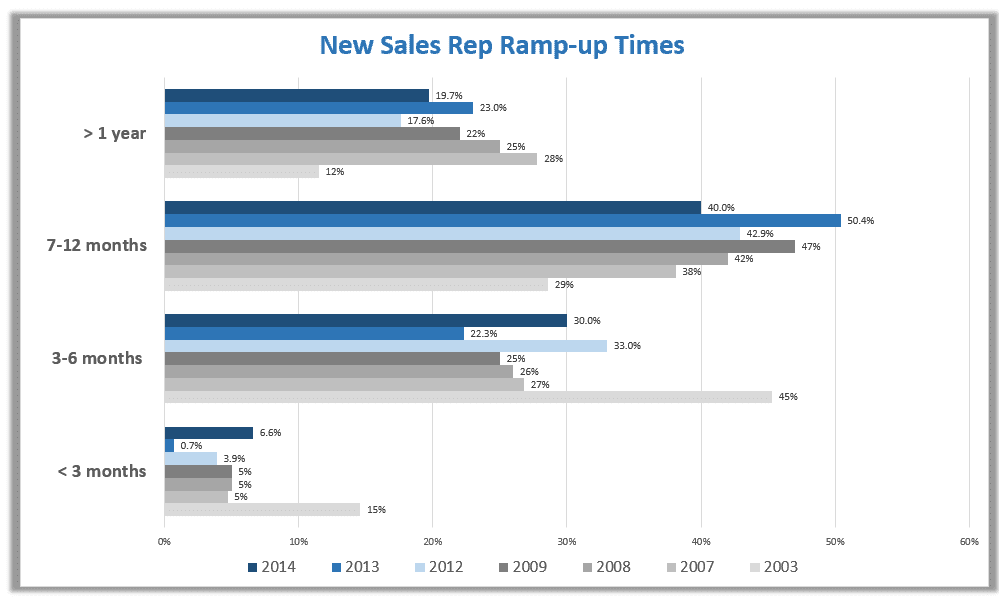Is New Employee Orientation Good Business Strategy? – Insights from Mindtickle Research


Today’s businesses – big and small – are under tremendous pressure to deliver profitable growth year after year. Equity markets, private investors, competition – you name it. Add to this, the uncertain elements of risk. It is pretty tough out there for most businesses – global and local.
To address these challenges with confidence, businesses need the dependable lever of high-performing engaged employees. Ironically, this throws up another business challenge, of Managing Talent. A shrinking workforce because of aging employees is further complicating this matter. Never before in business, has it been so important to attract, retain and grow talent, as today – and become an Employer of Choice. Therefore, the increasing importance of new employee orientation.
New Employee Orientation isn’t just an HR initiative, as most businesses think, but a unique opportunity to catapult your new employees into a high-performance orbit in the pursuit of business objectives. World-Class companies and organizations understand the link between New Employee Orientation and Business Execution. The annual “The Great Place to Work” list featuring the World’s top blue-chip companies is a standing testimony to this. These companies have also created stakeholder value consistently over the years, emerging as corporate leaders in their respective industry sectors and beyond. Businesses, across the board, have this incredible opportunity to leverage New Employee Orientation to drive good competitive business focused on profitable growth, employer of choice, risk management.
1. Profitable growth
Businesses exist to maximize profits – an objective they need to pursue in a sensitive, sustainable and relentless manner, in this fast-changing milieu. Simply put, businesses have to grow revenues and minimize costs. New Employee Orientation has a critical role to play in impacting each of these positively, by driving,
- Time to productivity of new hires
- Employee retention and addressing employee turnover
- Employee engagement
Aberdeen Group, a Harte-Hanks Company and a global thought leader in business research, has been at the forefront of exhaustive cutting-edge business research in the area of New Employee Orientation. Its numerous studies on Onboarding, over the years, have time and again, established how businesses have achieved improved productivity, employee retention, and engagement, through New Employee Orientation. The studies have established that through new hire onboarding, organizations can focus on their biggest asset, their employees because the experience of new hires has a direct impact on profitability.


In the book “The First 90 Days” Michael Watkins puts the break-even point of new hires at 6.2 months, highlighting it remarkably through this graphic.
As can be seen from the graphic, new hires consume value for the first three months and then begin contributing. New Employee Orientation can improve the chances of achieving this break-even on time and at times, even early. Any slippage in onboarding new hires would not only add to direct and indirect costs, it would also result in loss of revenues, especially in the case of top management executives and business facing employees.
Employees and new hires in an organization, given their bearing on revenues and expenses, can be broadly classified into the following:
a) Top management – Employees at a senior level often in leadership roles are the most expensive assets for an organization, but they can be the most productive of the new hires as they will be the one to guide their team to perform up to potential and contribute to the company’s growth. Personalized new employee orientation for leaders that help them is indispensable to get them contributing in a meaningful productive way. They:
- Align with the company’s overall business strategy,
- Understand short and medium term business imperatives,
- Experience the company culture, and
- Bond with their team
b) Employees on the Business Front – New hires who are in the marketing and sales departments contribute to the revenue and profits of organizations directly. New Employee Orientation can establish and communicate a ‘line of sight’ from the new hire’s performance to the company’s goal. This can help them see and understand how quickly their productive contribution can benefit the organization, their performance and ultimately their professional careers.
c) Business Support Functions like Human Resources, Accounts – While new hires in these departments do not impact company revenues directly, it is essential that they get productive at the earliest to optimize on costs. New Employee Orientation can help engage and motivate these new hires to become productive sooner.
In one of its studies, Aberdeen interviewed 466 companies that were running some form of new employee orientation. It was found that the top 100 of these companies reported a 24% year-over-year decrease in time to productivity for new employees and 12% year-over-year decrease in cost per employee for onboarding. Another example is to look at the talent management practices of IT and ITES outsourcing companies that have been recruiting in large numbers over the last few years. All the top tier IT outsourcing companies have institutionalized new employee orientation to buttress their off-shoring business strategy that thrives on “cost arbitrage” and “value creation”.
The present-day economy continues to make it expensive and challenging to find, hire and retain talent. The cost and time involved in the recruitment process make employee retention a priority for all business. Retention of employees is critical because hiring employees and training them to contribute directly to business costs. Added is the fact that a new employee makes a decision to stay with the company within the first six months. So, in the initial onboarding phase, the employer is vulnerable with respect to the new employee. Therefore, the necessity of new employee orientation.
Employee turnover is not always about direct costs. It consumes expensive management bandwidth, dampens employee morale and not to mention the loss in revenue opportunities. Worse still, if the leaving employee joins the competition, it increases the possibility of loss in market share. So, new employee orientation assumes significance when onboarding new hires.
An Aberdeen Survey based on the analysis of about 282 organizations, reported that organizations which conducted a new employee orientation program saw a 50 % increase in retention rates. The report also stated that the new employee orientation program was used as a means to reaffirm the new hire’s decision to join the organization and ensure a long-term commitment from the new hire thereby reducing costs of hiring and training. Other than increasing employee retention rates, the study highlighted the opportunity of leveraging new employee orientation to help new employees plan long-term careers with companies. Without a doubt, organizations have experienced higher retention rates and lower turnover costs by having a new employee orientation program.
3 Employee engagement
An exhaustive study by Aberdeen on Employee Engagement pointed out that almost all 466 participating organizations identified New Employee orientation as a means to engage and align employees. The same report states that employee engagement contributes to retention, productivity and most importantly drives customer satisfaction – an important revenue driver. In fact, the top 100 organizations marked engaging employees to drive customer satisfaction as the top objective of their onboarding program, and rightfully so.
Increased customer satisfaction leads to positive word of mouth, loyalty, repeat business, cross-selling opportunities, and high-quality referrals. All these are key revenue opportunities that businesses can capitalize on, by driving employee engagement through new employee orientation.
New employee orientation can drive employee engagement and alignment by focusing on new hire development and performance, taking frequent informal feedbacks, updating them on a company’s vision and encourage leadership where appropriate. New Employee Orientation can work wonders in aligning the new hires to business strategy and execution. Employees who are engaged early, from the word “GO”, are better placed to deliver a quality experience to customers.
2. Employer of choice
The ups and downs of the economy have made, sourcing and retaining good talent, extremely challenging. To counter this, organizations are striving hard to become employers of choice, as part of a business strategy. Therefore, businesses are adopting Talent Management Best Practices with New Employee Orientation being right up there. The reason is simple and straightforward, to make a good solid First Impression. This is also corroborated by the research from Aberdeen that suggests that New Employee orientation can help make that first good impression, which in turn positions the company as an employer of choice.
New employee orientation is a good “first” opportunity to introduce company culture and tradition. Culture and traditions are unique to an organization and give it the advantage which takes them towards successful business outcomes. Onboarding program can help introduce this culture to the new hires at the earliest. The sooner the new hires understand the culture of the organization, the more engaged and aligned they are, to perform. New employee orientation is also an opportunity for employers to demonstrate respect, reward, and responsibility, such that they are able to retain the new hires forever.
It is really interesting to note how Facebook and Google – Best companies to work for in 2013 – communicate their engineering and people culture through New Employee Orientation.
- The Facebook Bootcamp for New Hires
All new engineers – fresh or laterals – at Facebook undergo the Engineering Bootcamp during new employee orientation. This Bootcamp is intricately linked to Facebook’s Scale strategy. Facebook uses the ratio of users to engineers metric, to scale and grow. Through the Engineering Bootcamp, Facebook not only onboard engineers to push code onto the live site, but also germinates an engineering culture of fearlessly fixing bugs and not leaving it to code another day.
- The Google Noogler Program
The new hires at Google are called Nooglers, no marks for guessing why. Through this, Google propagates its culture to new hires, helps new hires make connections in their workplace and increase their motivation.
Not surprisingly, both Google and Facebook appear in the Best companies to work for in 2013 list. Employers of choice, undoubtedly.
Great workplaces are responsible towards their employees. They respect, reward and compensate the employees well enough to earn their trust and loyalty creating a brand name for their company in the eyes of the outsider. Great workplaces are employee focused and judiciously use the new employee orientation to also share the company’s immediate goals with the new hires. They understand that an aligned, engaged employee who trusts the leaders of the company will make extraordinary contributions to the success of the business.
3. Risk management
Remember Enron and Arthur Andersen. And more recently, Lehman. The risk is truly real – whether it is market, regulatory, reputational and operational. New Employee Orientation is a non-negotiable opportunity to sensitize the new hires on the various aspects of risk, whether it is with respect to the organization or the industry sector it operates in. Organizations would do well to customize the New Employee Orientation program with respect to risk sensitization, depending on the criticality of the position of the new hires. Senior management onboarding can definitely feature an exclusive track on risk management.
New employee orientation, so what’s next?
Challenges of the Economy, the positive impact new hires can have on business and many other business imperatives, are putting increasing pressure on organizations to include New Hire Onboarding in their business strategy and with good reason. Business profitability, typical HR challenges like Employee Engagement and also risk management, new employee orientation programs can address it all.
Only having a new employee orientation is not enough. As the wants and needs of each organization are different, the approach to new employee orientation should also correspond accordingly. Organizations have to determine the best practices for their new employee orientation and implement them in the pursuit of their business objectives. Many approaches to new employee orientation are possible:
- Formal and informal
- Full and partial Automation
- Mentoring
- and more currently, Enterprise GamificatioN
Onboarding approaches that drive engagement, alignment, productivity and contribute to company growth, have the highest chance of driving business success. This is where the importance of social HR comes to the fore. Jeanne Meister, best-selling author of “The 2020 Workplace: How Innovative Companies Attract, Develop, and Keep Tomorrow’s Employees Today” in her January 2013 Forbes article touted 2013 as the Year of the Social HR, wherein organizations would integrate social technologies in recruiting, developing and engaging employees. Of the five social media trends that Meister writes, will impact HR in 2013, Enterprise Gamification ranks at the top.
The World’s leading knowledge organizations like Deloitte and Capgemini have already taken leadership in employing Enterprise Gamification to drive higher levels of employee engagement. Fresh graduates joining the workforce, the now omnipresence of Gen Y millennials at the workplace and the rise of remote teams, are all contributing to heightened interest in the concept of gamification to drive business execution.
Business, it seems is discovering FUN, all over again. And what better than to begin at from the starting line – New Employee Orientation. Get, set, go!











